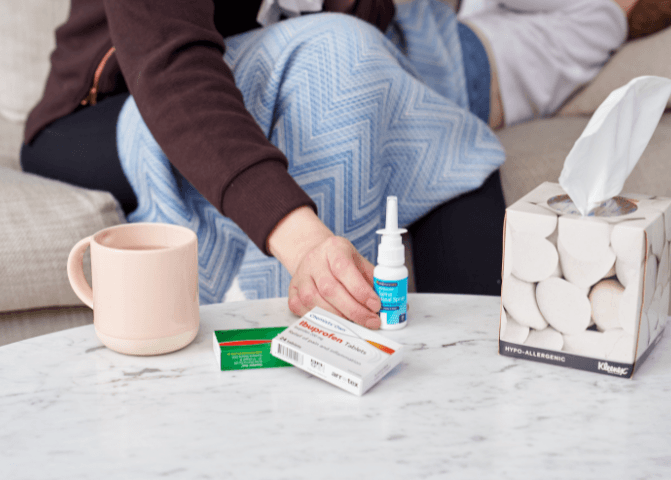02/10/2023
2023 October – Breast Cancer Awareness Month
Table of Contents
Breast cancer is the top cancer among Australian women, accounting for nearly 30% of female cancer cases. By the end of 2023, an estimated 20,500 women will have been diagnosed, resulting in 3,300 deaths. It affects 1 in 8 women and occurs in men at about 1 in 667. The impact extends beyond the diagnosed individuals to their loved ones. October marks breast cancer awareness month, highlighted by pink ribbons encouraging self-checks, discussions, education, and donations for ongoing research.
What is Breast Cancer?
Breast cancer arises from uncontrolled cell growth in breast tissue, primarily in ducts and lobules. The two main types are non-invasive and invasive, further categorized by subtype. Non-invasive types, like ductal carcinoma in situ (DCIS) and lobular carcinoma in situ (LCIS), stay within ducts or lobules without spreading. They require treatment and monitoring due to increased risk of invasive cancer.
Invasive breast cancers, such as invasive ductal carcinoma (IDC) and invasive lobular carcinoma (ILC), spread beyond ducts or lobules, often reaching lymph nodes. They can eventually metastasize to distant body parts like lungs, liver, or brain.
Breast cancer subtypes include hormone receptor positive, HER-2 positive, and triple negative. Hormone receptor positive cancers express hormone receptors, driving their growth. HER-2 positive cancers involve the HER2 receptor, while triple negative ones lack estrogen, progesterone, and HER2 receptors.
While causes aren’t always clear, risk factors include gender, age, genetic mutations, lifestyle, and family history. Being vigilant for symptoms and undergoing self-screening are crucial, particularly for higher-risk groups. Symptoms include lumps, nipple changes, skin alterations, and breast pain. Regular mammograms, recommended every two years for women aged 50-74, aid in early detection.
Breast cancer management involves a multidisciplinary approach, including surgery, chemotherapy, hormone or targeted therapies, radiation, and palliative care. Survival rates have improved, with early detection enhancing the 5-year survival rate to 92% for women and 86.5% for men diagnosed with breast cancer.
Non-invasive breast cancers
DCIS (ductal carcinoma in situ) and LCIS (lobular carcinoma in situ) involve abnormal cancer cells growing within breast ducts or lobules without spreading to other breast or body tissues. These are termed “pre-cancers,” not immediately life-threatening but heightening the risk of invasive cancer development over time. They require treatment and continual monitoring despite not posing an immediate threat.
Invasive breast cancers
Most breast cancers are invasive at the time of diagnosis. This means that they have spread into the breast tissues surrounding the ducts or lobules or lymph nodes. Invasive ductal carcinoma (IDC) is the most common type of invasive cancer accounting for around 80% of cases. Invasive lobular carcinoma (ILC) is the other common invasive breast cancer. Over time both of these cancers can spread by the lymphatic system to other more distant parts of the body like the lungs, liver and brain.
Subtypes of breast cancers
There are subtypes of breast cancer, the common types including;
- Hormone receptor positive breast cancer which accounts for about 60-70% of breast cancers. In this subtype the cancer cells express receptors for female hormones (progesterone and oestrogen) which cause the cancer to grow.
- HER-2 receptor positive breast cancer occurs in around 20% of breast cancers. Here the cancer cells express a receptor called human epidermal growth factor receptor 2 (HER2) and this promotes cancer growth.
- Triple negative breast cancer means that the cancer cells do not have oestrogen, progesterone or HER2 receptors. This type of cancer is aggressive and accounts for about 15% of breast cancer.
You can have both hormone receptor positive and HER-2 positive breast cancer at once.
Do We Know What Causes Breast Cancer?
While the cause of a person’s breast cancer is not always clear there are some known risk factors for developing breast cancer. These include but are not limited to:
- female gender.
- increasing age.
- BRCA1 or 2 genetic mutations.
- increased breast density.
- prolonged use of oral contraceptives and hormone replacement therapy.
- excessive alcohol use.
- smoking.
- sedentary lifestyle and poor diet.
- a history of breast cancer in direct family members.
How Do We Find Breast Cancer?
It’s crucial for everyone, especially those at higher risk (females, over 50, BRCA1 or 2 positive, with family history), to watch for common symptoms. Self-screening, either through a self-conducted breast exam or by a GP, is the initial step in detecting breast cancer. The exam is quick, taking less than 5 minutes, preferably done before showering. It involves observing your breasts in different positions and systematically feeling them, including the armpit and up to the collarbone, to detect any changes. Regular checks and understanding what’s normal for your breasts are vital.
During the exam, you or your doctor might notice:
- Lumps or thickening in the breast.
- Nipple changes or sores.
- Nipple discharge or inversion.
- Changes in breast size or shape.
- Breast pain.
- Skin alterations like dimpling.
Most changes found during self-exams are usually not breast cancer, but if anything seems unusual, it’s essential to consult your GP. Not all diagnosed cases show symptoms, hence additional screening tools like mammograms are beneficial.
What is a Mammogram and Who Needs One?
Mammograms are an x-ray of breast tissue that can locate changes that may be too small to be felt during a self or doctor conducted examination. Mammograms can either be a screening tool for women who have no signs or symptoms of breast cancer, or it can be used to further evaluate when there is suspicion of breast cancer due to a sign or symptoms, i.e., a lump. The mammogram is straight forward and brief but somewhat uncomfortable. You will be asked by the radiographer to remove your clothing from the waist up to expose your breast tissue. Each breast is then pressed between two x-ray plates to allow clear imaging of the breast tissue. Each breast has two x-rays taken for your doctor to review and discuss with you at a follow up appointment.
A screening mammogram is recommended every 2 years for all women between 50-74 years of age who have no symptoms and who are low risk for breast cancer. For women who have a parent, sibling or child with breast cancer undertaking screening mammograms from age 40 onwards should be seriously considered in discussion with your GP. For all women aged 50 and over, mammogram testing is free and can be arranged through Breast Screen Australia by invitation or through your own GP. If you are in a high-risk group your GP may recommend other investigations such as an MRI which is in part covered by Medicare. In general, a positive finding on a mammogram requires further investigation that may be invasive in nature, i.e., biopsy.
What Happens if My Doctor Suspects I Have Breast Cancer?
If your doctor suspects that you have breast cancer based upon a clinical finding, like a breast lump, they will arrange diagnostic imaging such as a mammogram or MRI. The suspicious mass will also need to have a biopsy. A biopsy involves the use of a needle to take a sample of tissue from the mass. This is done under a local anaesthetic. The sample is then sent for laboratory testing looking for cancerous cells. Breast cancer is diagnosed with a combination of clinical findings, radiological imaging and tissue biopsy pathology results. If you do have a diagnosis of breast cancer the next steps are to find out if the cancer has spread to lymph nodes nearby and possibly distant sites in the body (metastatic cancer) by taking a biopsy of nearby lymph nodes and/or imaging.
What are the Common Ways to Manage Breast Cancer?
Managing cancer of any type requires a large team of health professionals who will co-ordinate care. These professionals usually include your GP, one or more surgical, medical oncology and radiation oncology specialists to guide surgical, chemo and radiotherapy approaches as well as other health professionals including breast care nurses, social workers and psychologists, pharmacists and other therapists. Treatment will depend on the size of a cancer, a patients age, the type of cancer and whether it has spread locally or to other body parts. Treatments may include any number of the following options;
Surgery
Commonly, surgical intervention involves removing breast tissue and axillary (armpit) lymph nodes. The extent of removal depends on cancer stage and lymph node involvement. Breast-conserving surgery, suitable for small tumors or those reduced by pre-surgery chemotherapy, may be opted for. However, a mastectomy, completely removing all breast tissue, is necessary in some cases.
Additionally, a sentinel node biopsy is often performed. This procedure involves testing the initial lymph node likely to encounter cancer cells from the primary breast tumor. A clear node indicates minimal further spread. Yet, if cancer is detected in the sentinel node, more armpit lymph nodes might be removed, and additional imaging conducted to assess potential cancer spread to other organs.
Chemotherapy
Chemotherapy utilizes drugs that destroy cancer cells. Various chemotherapy agents target specific breast cancer types. It can be administered before (neoadjuvant) or after (adjuvant) surgery. Prior to tumor removal, chemotherapy reduces tumor size, often facilitating less tissue removal, promoting breast conservation over total tissue removal. This approach improves patient outcomes, allowing more time for surgical planning, genetic testing, and other interventions.
Hormone and Targeted Therapies
Hormone therapy is used to reduce the amount of female hormones in the body which helps to slow the growth of cancer cells that have hormone receptors on their surface. Which hormone therapy will depend upon factors like age, breast cancer type and whether you have reached menopause. Targeted therapy uses drugs that attack targets within the cancer cells and are currently only used in HER2 positive breast cancer.
Radiation therapy
Radiation therapy is a key part of overall breast cancer treatment for most patients particularly those who have breast conserving surgical intervention. The aim of this treatment is to destroy any undetected cancer cells. Generally, if breast tissue is completely removed in a procedure called a mastectomy, radiation therapy can be avoided in most instances. Radiation therapy can have significant side effects also known as “toxicities” including breast pain, formation of hard fibrous tissue in the treated area and potentially the lungs as well as heart problems.
Palliative Care
At times, breast cancer is diagnosed at an advanced stage, impeding curative treatment. Palliative care doctors, along with GPs, specialists, and healthcare professionals, collaborate to manage chemotherapy, targeted therapy, and radiotherapy. These treatments aim to slow cancer progression and alleviate symptoms such as pain. Palliative care’s primary objective is to enhance a person’s remaining quality of life. It plays a crucial role in providing effective end-of-life care, supporting patients and their loved ones through this challenging period.
Breast Cancer Outcomes
Advancements in early detection and enhanced treatment have notably increased the 5-year relative survival rate for all breast cancer types over time. Nowadays, most cases are diagnosed at Stage I (limited to the original site, less than 2 cm) or Stage II (spread within breast tissue or to lymph nodes, larger than 2 cm). The 5-year survival rate for women with breast cancer stands at 92%, and for men, it’s 86.5%. This means that 92% of women and 86.5% of men diagnosed with breast cancer are expected to survive at least five years following their diagnosis.
Summary
Early detection of breast cancer involves understanding its common signs, regular self-examination, consulting your GP promptly, and considering mammograms based on your risk factors. Ongoing research improves treatment options, resulting in high 5-year survival rates for all breast cancer types in both men and women.
If you notice high-risk features or concerning breast symptoms, don’t delay seeking advice from your doctor. For those diagnosed with breast cancer seeking support for themselves or loved ones, links below or discussions with a doctor or a breast cancer health professional are recommended.
Support Resources
General information about all types of breast cancer can be found at the Cancer Council of Australia website.
As another option, Pink Hope is an organisation that is involved in personal support, breast cancer research and education as well as health advocacy for those people at high risk of cancer. More information about how they may be of help can be found on their website.
In addition, the breast cancer network Australia is an organisation that provides education, support and advocacy for people with a diagnosis of breast cancer as well as their loved ones. More information can be found on their website.
Talk to a Doctor Today!
Stay on top of your health. If you wish to learn more about breast cancer or have noticed any symptoms, speak to a doctor today and book a consultation.
Recommended reading
Search for a specific topic or filter by categories to find information on what you need to know on the full Medmate Journal

What to Do When You’re Unwell at Home: A Practical Guide
Feeling unwell at home can be frustrating—especially when you can’t get in to see a doctor or you’re too unwell to leave the house. Whether it’s symptoms of a virus,…

